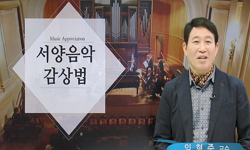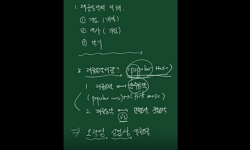German-born composer Johannes Brahms is a representative composer of the 19th century Romantic Era. He has left numerous masterpieces in various genres including piano works, symphonies, songs, concertos and chamber music. In particular, chamber music...
http://chineseinput.net/에서 pinyin(병음)방식으로 중국어를 변환할 수 있습니다.
변환된 중국어를 복사하여 사용하시면 됩니다.
- 中文 을 입력하시려면 zhongwen을 입력하시고 space를누르시면됩니다.
- 北京 을 입력하시려면 beijing을 입력하시고 space를 누르시면 됩니다.
브람스 후기작품의 음악적 특징 연구 : <클라리넷 소나타 제1번, Op. 120> 1악장을 중심으로 = A study on the musical characteristics of the late Brahms works : focused on the clarinet sonata No. 1, Op. 120, 1st movement
한글로보기부가정보
다국어 초록 (Multilingual Abstract)
German-born composer Johannes Brahms is a representative composer of
the 19th century Romantic Era. He has left numerous masterpieces in
various genres including piano works, symphonies, songs, concertos and
chamber music. In particular, chamber music plays a big part in his
work. He left behind 24 chamber music pieces in his lifetime which did
not actively use wind instruments. While string instruments are
frequently used for chamber music, Brahms used only clarinet and horn
among many wind instruments. There are four chamber works including
clarinet; Clarinet Trio, Op. 114, Clarinet Quintet, Op. 115, and Clarinet
Sonata No. 1, 2, Op. 120.
Clarinet Sonata No. 1, Op. 120, which is covered in thesis, is a work
completed by Brahms in his late years, adhering to the traditional
Sonata form with four movements. For the establishment of theoretical
background, the author first examines the composer's life and musical
characteristics and examines the late and disability theories behind
the musical characteristics of Brahms' late years. Based on this, the
first movement of Clarinet Sonata No. 1, Op. 120 will be analyzed to
examine the meaning of exceptional and unique features featured in the
late Brahms works.
The 1st Movement of Clarinet Sonata No. 1, Op. 120 shows musical
features based on the late and disability. The sudden deterioration of
health and the absence of loved ones cause changes in the musical
atmosphere. Unlike before, simple and concise points are revealed in
the first movement, which is motivated by events that caused Brahms'
physical changes and mental shocks beyond the alienation or depression
that humans generally feel as they approach death.
Beyond the understanding of the igneous and structural features of
ordinary Brahms music, it expands the understanding of the work by
closely identifying the situation faced by composer at a particular
time based on late-style. It also aims to give the performer an in-depth
understanding and idea of the work through various interpretation of the
Clarinet Sonata composed by Brahms in his late years.
국문 초록 (Abstract)
독일 출생의 작곡가 브람스(Johannes Brahms, 1833-1897)는 19세기 낭만주의 시대를 대표하는 작곡가이다. 그는 피아노 작품, 교향곡, 가곡, 협주곡, 실내악 등 다양한 장르에 수많은 걸작을 남겼다. ...
독일 출생의 작곡가 브람스(Johannes Brahms, 1833-1897)는 19세기 낭만주의 시대를 대표하는 작곡가이다. 그는 피아노 작품, 교향곡, 가곡, 협주곡, 실내악 등 다양한 장르에 수많은 걸작을 남겼다. 특히 그의 작품에는 실내악이 큰 비중을 차지한다. 그는 평생 24개의 실내악 작품을 남겼는데 특이하게도 관악기를 적극적으로 사용하지 않았다. 현악기를 사용한 다양한 편성의 실내악 작품이 있는 것에 반해 브람스는 수많은 관악기 중 클라리넷과 호른만을 사용하였다. 클라리넷을 포함한 4곡으로 <클라리넷 삼중주, Op. 114>(Clarinet Trio, Op. 114),<클라리넷 5중주, Op. 115>(Clarinet Quintet, Op. 115), <클라리넷 소나타 제1, 2번, Op. 120>(Clarinet Sonata No. 1, 2, Op. 120)로 구성된다.
본 논문에서 다루는 <클라리넷 소나타 제1번, Op. 120>은 브람스가 말년에 완성한 작품으로 전통적인 소나타 형식과 4악장 구조를 고수하고 있다. 저자는 이론적 배경의 구축을 위하여 작곡가의 생애와 음악적 특징을 먼저 관찰하고 브람스 말년의 음악적 특징의 배경이 되는 후기이론과 부조이론에 대하여 모색해본다. 이를 바탕으로 <클라리넷 소나타 제1번, Op. 120> 1악장을 분석하여 브람스 후기 작품에 등장하는 예외적이고 독특한 특징의 의미를 고찰한다.
브람스 <클라리넷 소나타 제1번, Op. 120> 1악장에는 후기이론 및 부조이론에 의거한 음악적 특징들이 곳곳에 등장한다. 갑작스러운 건강 악화와 사랑하는 사람들의 부재는 그의 작품에서 다양한 음악적 변화를 가져왔다. 이전과는 다르게 단순화, 간결화 되는 음악적 표현들이 1악장 곳곳에 드러나는데 이는 일반적으로 죽음에 도달하면서 일반적으로 인간이 느끼는 사회로부터의 소외감이나 우울증을 넘어, 브람스가 겪었던 신체적인 변화 및 정신적인 충격을 주었던 사건들이 동기가 된다.
일반적인 브람스 음악의 화성 및 구조적 특징의 이해를 넘어서 후기 스타일 음악에 입각한 특정 시기에 작곡가가 처한 상황을 면밀히 파악하는 것으로 작품의 이해를 넓힌다. 또한, 브람스가 말년에 작곡한 클라리넷 소나타에 대한 다양한 해석 가능성의 제공을 통해 연주자에게 작품에 대한 심층적 이해와 아이디어를 주는 것으로 목적으로 한다.
목차 (Table of Contents)
- Ⅰ. 서론 1
- Ⅱ. 본론 3
- 1. 브람스의 생애와 말년 3
- 2. 리하르드 뮐펠트의 만남 6
- 3. 건강 악화와 음악 11
- Ⅰ. 서론 1
- Ⅱ. 본론 3
- 1. 브람스의 생애와 말년 3
- 2. 리하르드 뮐펠트의 만남 6
- 3. 건강 악화와 음악 11
- Ⅲ. 후기이론 (Late Theory)과 부조이론 (Theory of Disability) 18
- 1. 후기이론 18
- 2. 부조이론 22
- Ⅳ. 브람스 음악의 배경과 특징 24
- 1. 신고전주의와 신독일악파 24
- 2. 발전적 변주 26
- 3. 3도 선율과 불협화음 26
- 4. 헤미올라와 교차리듬 30
- Ⅴ. <클라리넷 소나타 제1번, Op. 120> 1악장 분석 31
- 1. 작품배경 및 전체구조 31
- 2. 제 1악장 분석 33
- Ⅵ. 결론 62
- 참고문헌 64
- Abstract 68












